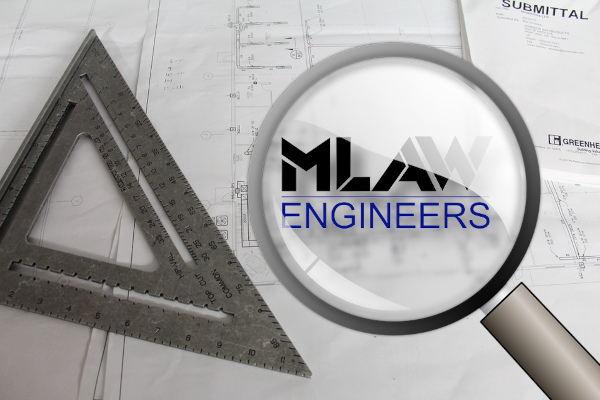Featured Article
Commercial buildings and homes are frequently constructed on lots which are not flat. In these cases, drainage and waterproofing may become important issues. Any time there is a change in grade of the foundation slab, there is a possibility of water appearing on the downhill side of the grade change. Often a structure is constructed with a cut on the uphill side in order to generate a relatively level site for building purposes. Many times these cut faces are the source of seep water coming out of the ground. If, in addition, the foundation has a wall constructed against these cut faces, which would be a partial basement wall, the problems of drainage and waterproofing become serious. People who occupy buildings or homes are just as incensed about water appearing on the inside portion of the structure as they are about a foundation failure or other structural failure.
Another good reason for draining a foundation or retaining wall element is to keep the horizontal earth load under control. Typical retaining walls, which can include deep exterior or interior beams of a foundation slab or partial basement walls, are typically designed for a horizontal thrust based on the type of earth being retained. Different types of soil produce different types of thrusts. For example, the worst is clay which produces a high horizontal thrust closely approaching its total weight. The best is a well drained granular material such as clean crushed stone or sand or gravel. These materials can produce a thrust of ¼ of their total weight in the horizontal direction. If water is permitted to accumulate behind these retaining structures, the total earth load will have to be doubled or even tripled. In effect you add 62.4 pounds of thrust multiplied by the height of the wall for the water load. When a retaining structure fails, most of the time it is due to an increase in water load. Therefore, drainage is extremely important not only to keep water from seeping out into finished areas but also to keep the wall from being excessively loaded in the horizontal direction.
Keeping water out of the finished areas requires more than waterproofing. If the water builds up any head at all it will find a way to get through the slightest crevice or pin hole in the concrete and appear on the inside of the house causing anguish, soaked carpets, and damp rotted wood. Therefore, it is important to waterproof walls but it is really more of a damp proofing or vapor proofing. The only way to keep water from coming into the finished spaces of the house is to have an effective back drain. An effective back drain is one that will relieve the water before it builds up head and penetrates the concrete. The drainage line must be well below the lower slab or floor elevation which it is designed to protect. In addition, these drains will have to exit some place after being conveyed with a continuous sloping pipe. Exiting into a dry well is not a good idea since dry wells frequently fill up and become wet wells. In addition, it is important to build back drains or any other type of subsurface drains properly and with features which permit future maintenance if necessary. Drainage through exterior retaining walls or exterior exposed grade beams where appearance is less important can be accomplished through weep holes carried directly through the wail near the bottom. These weeps should be designed and built in such a way such that the under slab fill is not carried out by erosion and that they do not stop up.
Kirby T. Meyer, P.E.
MLAW Consultants & Engineers
Originally published in MLAW Newletter, May 1997
Explore
When Should You Stress a Cable Slab?
The question as to when the proper time to apply the stressing force to the post tensioned cable in this type of reinforced foundation is of considerable interest. If you apply the stressing load too soon you have the danger of pulling cable anchorages out of the green concrete. If you wait too long there…
Read More- « Previous
- 1
- …
- 6
- 7
- 8

